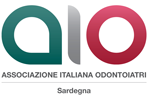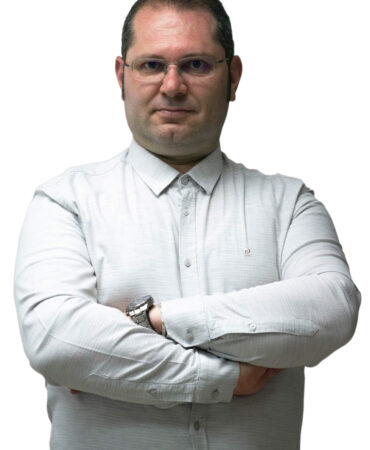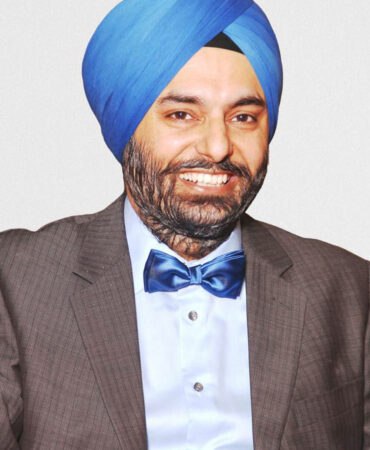Top Doctors - AIO Multidiscipinary session
8 ADA CERP CREDITS
14.30 - 15.00 | NEW THERAPEUTIC STRATEGIES THANKS TO THE AID OF BICONOMETRY AND DYNAMIC GUIDED SURGERY: THE OVERCOME OF PARADIGMS
One of the most modern therapeutic approaches in totally edentulous patients or in terminal dentition consists in the immediate loading implant placement and the application of Toronto Bridge-type fixed prostheses within 24 hours.
The implant with Cone-Morse connection used to make these artifacts has been well scientifically studied in detail over the last twenty years and has given clearly superior biological and clinical responses compared to implants with other connections.
The major difficulties encountered in these cases are the adequate pre-implant design from an aesthetic-functional point of view, the adequate number and positioning of implants in the arch based on the bone volume, the speed of execution of the prosthesis for immediate loading and its passivity on the implant pillars, last but not least, the registration and respect of the jaw-cranial relationship during all the therapeutic phases to obtain a prosthesis in harmony with the bone, the muscles, the tongue, the neuro-muscular bands, the aesthetics.
The planning and installation of the implants through dynamic guided surgery (Navigated Surgery), makes the surgical act much more precise, with less morbidity, more precision, speed, and makes it more repeatable.
Each of the aforementioned topics is treated with a view to simplifying the treatment, making it more versatile and reliable over time, maintaining the highest operational quality for the benefit of the patient first and then of the clinician.
The report aims to expose a new operating system (CLIKSS= Comuzzi Luca Intraoral Konometric Spliting System) to improve the performance of total fixed products on implants to make them stable and robust over time but also flexible and easily removable during oral hygiene sessions .
The participant will acquire the basic concepts to create a Toronto prosthesis avoiding unpleasant problems of hoarseness, reduced masticatory capacity, biting of the lips and cheeks as well as of the tongue that often accompany this type of procedure.
Different suggestions, tricks, operative sequences will be treated to be immediately used in the clinical practice of the following days.
15.00 - 15.30 | Why Protocols Fail: Function & Aesthetics: Excellence of Logic in Disease Treatment Solution: lasermicrosurgery™.
The key in aesthetic considerations and constructs is based on functional physiologic mechanism and biologically healthy nuances in the oral systemic metrics pathophysiological process of disease. This reflects the optimal solution of specific timed and typed sequence of intervention and renders an expected clinical outcome.
The scope of this presentation is the general pathophysiological process of disease and light tissue interaction through optical physics treatment applications. While the rationale in mechanism and aesthetics particularly highlighting the oral tissues functionality from diagnosis, disease progression and treatment mediation, it is the intent of this presentation to focus here uniquely on the intervention portion. It will further identify the nuances of future anticipation in preparation of eventual disease mutations and phenotype changes in future patient case profile and patient population based on selective treatment rationale between 1-axis therapies and the alternative optimal mechanism driven therapeutics.
The aspect of microsurgery has proven extremely useful in analog aspects in oral tissue protocols. Furthermore, the development of magnification and digitally enhanced resulting algorithm has expanded the integration further still to optimize healing potential, increase recovery tissue time and tissue results. Microsurgery can be optimized by laser light not only in diagnostic capabilities but also in intervention capabilities. This increased protocol specific potential for eliminating the need for some portion if not all of alternative mechanical suture composure and tissue geo-position, can be an added variable of consideration when scrutinizing clinical treatment options. Aspects of multilayer tissue depiction will be selectively highlighted by tissue parameters composition and reflective light compartmentalization in as to potentiate tissue transformation through maximizing therapeutic index and minimizing clinical toxicity index during the process.
A clinical case will substantiate and illustrate the logical fact based science and mechanism of the pathophysiological process of disease and the optimized, selective and modulated lasermicrosurgery™ therapeutic thread of the oral systemic profile composition.
15.30 - 16.00 | Treatment of severe recessions in case of complex ortho-surgical treatment
Defects involving severe disorders in the relationship between the maxilla and the mandible do not qualify only for orthodontic treatment. Such disorders should be treated by an interdisciplinary orthodontic and surgical team. Despite the use of standard treatment methods, the therapy is always planned and carried out individually for each patient. In most cases, maxilla position correction leads to a functional and aesthetic improvement – increased patency of the respiratory tract, full correction of occlusal defects, improvement of the patient’s profile.
The surgical treatment of this type of defects of the facial part of the skull is associated with a number of potential complications. For this reason, alternative solutions and treatment methods are being sought. Regenerative medicine, which has already been known in reconstructive surgery, is used increasingly more often in the treatment of orthognathic defects. It is a mistake to ignore skeletal disorders in adult patients in the hope that bone formation can be influenced by the orthodontic movement of the tooth. That’s why 3D personalized bone reconstruction will be presented as a method for improvement of alveolar ridge before orthodontic treatment as a method allow to prepare to or replaced orthognathic treatment or after for treatment sever of bone loss.
16.00 - 16.30 | The Baruti-Demiraqi approach. Surgery meets orthodontics. Corticotomy combined with BCGF and/or “Sticky Bone” or “Sticky Tooth”.
Corticotomy was used with different rates of success with the goal to accelerate orthodontic movement. But not a well-defined protocol has been proposed. This brought the need to compile one in order to fill this gap. The story of this kind treatment procedure is detailed in the lectures both orthodontic and surgical. A review to up to date literature and results achieved are also explained.
The Aim: The purpose of this lecture is to present a 10 years clinical study using the corticotomy procedure combined with Blood’s Concentrated Growth Factors and “Sticky Bone” and/or “Sticky Tooth”, a modified PAOO approach from Dr. Edlira Baruti and Dr. Gurien Demiraqi. A well-defined protocol including indications, treatment plan and results expected.
Materials and methods: We used corticotomy associated with BCGF and/or “Sticky Bone” or “Sticky Tooth” on orthodontic patients with insufficient bone and of the teeth roots and low quantity and quality of gingival coverage. Surgical procedures were performed mostly under sedation and the corticotomy was performed mainly at the buccal aspect of both the maxilla and mandible. The blood was taken during the procedure with the Vacutainer system and processed through VLAD centrifuge. After the corticotomy performed mainly with piezo surgery, the bone surface has been washed with autogenous serum and covered with autogenous white Buffy coat (Cloud)+CD34+GFs in the form of membranes. A layer of “Sticky Bone” or when possible autologous “Sticky Tooth” (combining extractions of wisdom teeth, premolars or other decided to be extracted by the orthodontist with the corticotomy procedure) by Dr. Gurien Demiraqi, was placed beneath the fibrin clot. The bonding of the brackets was made before the surgery. The activation began immediately after surgery and the routine activations were made every 2 weeks.
Results: We are presenting the results with our protocol: The patients have been initially checked 2 days after surgery. Post-operative period was presented with only a light edema in all the patients. The use of the painkillers such as Ibuprofen etc. was low in dosage and for a maximum period of 2 days. The total treatment time was 4 -12 months. The follow is up to 5+ years. It consists of clinical and CBCT control.
Conclusion: Corticotomy combined with the use of BCGF resulted on all the patients: a shorter time of orthodontic treatment, a painless and little edema on the post-operative period and an improvement of the periodontal and gingival recessions of the patient’s teeth. When “Sticky Bone” or even better “Sticky Tooth” were used the bone enhancement was very satisfactory and stable in time.
16.30 - 17.00 | dealing with peri-implantitis: don't panic & be prepared with various treatment regimens
As one in six patients receiving implant therapy are likely to show signs of peri-implant diseases with varying degrees of severity throughout the lifespan of the implants, clinicians will be confronted with peri-implant complications requiring appropriate management. The ideal management of peri-implant infections should focus both on infection control of the lesion, detoxification of the implant surface, and regeneration of lost support. Treatment options can be surgical or nonsurgical. Host’s medical status, defect configuration, aesthetic outcome, ability to access for plaque control post-treatment, and the patient’s wishes are key factors to consider. The purpose of this presentation is to provide a contemporary synopsis on the management of peri-implantitis with emphasis on explantation.
17.00 - 17.30 | Soft tissue utilization and management in the aesthetic zone
inaugural ceremony

Contacts – Privacy e cookies policy
© 2024- AIO Cagliari Oristano – Via San Giovanni 97 – 09100 Cagliari – Partita IVA 03675540920
Webmaster by Mobilbyte



